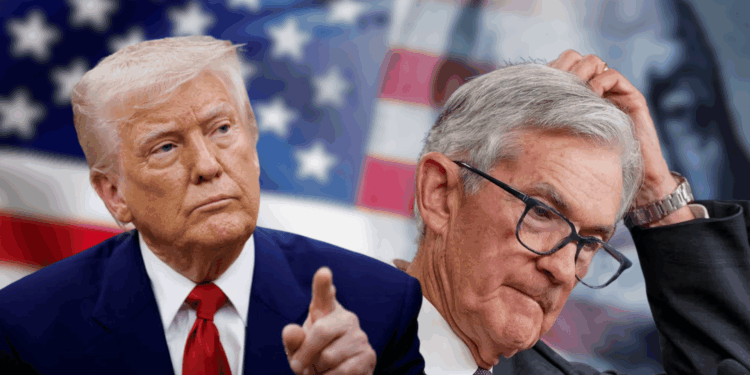- Fed likely to hold rates steady today, resisting President Trump’s push for immediate cuts amid persistent inflation concerns.
- Next likely rate cut could come in September, with economists forecasting a 0.25% reduction as inflationary risks ease and growth potentially slows.
- Powell continues to resist political pressure, emphasizing data-driven policy even as Trump escalates calls for rate cuts and hints at replacing him before his term ends in May 2026.
President Donald Trump continues his push for lower interest rates, calling for immediate cuts during a recent meeting with Federal Reserve Chair Jerome Powell. However, that wish is unlikely to be granted today, as economists peg the chances of a rate cut at just 4%. The Fed has kept its benchmark interest rate steady between 4.25% and 4.5% since December 2024, resisting political pressure amid concerns that new tariffs may spark fresh inflation. With inflation creeping up to 2.7% in June and economic indicators showing resilience, the Fed is expected to stay the course for now.
Despite Trump’s criticisms—and thinly veiled threats of firing Powell over unrelated issues like a building renovation—the Fed chair has signaled no urgency to ease policy. Powell, originally appointed by Trump, has consistently maintained the need for caution, especially given the potential inflationary impact of Trump’s tariff regime. Analysts from Oxford Economics and EY-Parthenon agree, suggesting that Powell and the FOMC are unlikely to move until clearer signs of economic weakening appear.
What to Expect From Today’s Fed Decision
The Federal Open Market Committee (FOMC) is widely expected to announce at 2 p.m. ET today that rates will remain unchanged. Following the decision, Powell will hold a press conference where he’s likely to face questions about political pressure and the timeline for future rate cuts. While Powell does not control the Fed’s decision alone, his influence carries significant weight among the committee’s 12 voting members. Notably, two Trump-appointed governors—Michelle Bowman and Christopher Waller—have voiced support for cutting rates sooner rather than later.
Some experts believe dissent within the FOMC may grow, with the potential for two members to break ranks and vote for a cut. That would mark the highest level of dissent since 1993. However, with second-quarter GDP growth hitting a robust 3% and inflation still above the Fed’s target, most economists believe Powell and the majority of the committee will stand firm—at least for now.
September Likely to Be the Earliest Opportunity for a Cut
While a rate cut today is unlikely, the next opportunity may come at the September 16–17 FOMC meeting. FactSet data indicates a 63% chance of a 0.25% rate cut at that time, as the Fed looks for clearer signs that economic growth is slowing or inflation is easing. Experts anticipate two rate cuts in 2025, followed by more aggressive easing in 2026 if labor markets and growth deteriorate.
Powell has remained consistent in his message: the Fed will respond to data, not politics. That principle will likely be tested further as Trump continues to apply pressure in public and behind the scenes. Still, unless inflation shows significant decline, the Fed is expected to wait before making any major moves.














